The information on your website has been very helpful and your products are excellent! Thank you.
Doreen from New JerseyColdCure Ankle | BFST Ankle | Pre-Cut TapeFeb 12, 2023


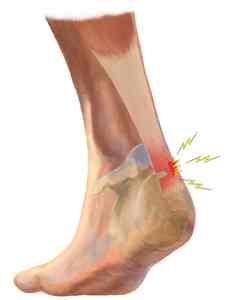
Whether your injury came from sudden trauma or developed over time, once the Achilles gets damaged, recovery requires your attention. Every day with every step, your Achilles carries a huge load and the repetitive motion through the day can aggravate your condition. In the early days of recovery, try to rest your ankle as much as possible.
Typically, people recognize when this type of injury occurs. Whether it was due to a fall, over exertion, or moving the wrong way, it is usually accompanied by an intense pain in the moment that continues to persist over time. The good news is that if your Achilles problems are the result of sudden injury, you just need to take the proper steps to recover and it likely won't plague you again. The tough news is that even though it may have happened in the moment, because we don't stop basic activities, the repetitive motion through the day can cause the problem to persist indefinitely.
This is a super common scenario when it comes to Achilles injuries. Everyone knows that as you exercise, over time, your muscles get stronger. And, when you drop you exercise levels from what was typical in your life, over time your muscles get weaker and smaller. Well, the same thing happens to tendons.
With tendons, you don't notice the bulking up and down as much on the outside. But inside your ankle, as your muscles get stronger and increase the demands on the tendon, your Achilles gets a little bit thicker and much stronger over time. Similarly, when you take a break from your regular level of activity, the tendons thin out and become weaker over time. That amount of strength on the weakening side is often enough that when you attempt to resume what used to be your normal activity, you're much more vulnerable to tearing your Achilles.
To make your potential for injury much worse, our brains don't forget how we used to perform. Too often, when we start resuming what was our normal way of life, we often try to jump right back to the level we remember ourselves being at before. That is key to so many Achilles injuries. When you've had a reduction in normal physical activity, be it a few weeks or a few months, you can't just try to jump back in at the same level as you remember you performed at. When you jump right back in, you subject your body to levels of stress that you are no longer physically ready to do.
If it has been a short break, perhaps a matter of days or just a couple of weeks, you can probably ramp back up in the same amount of time. Our body atrophies (shrinks and gets weaker) faster than it gets stronger though, so if it has been several weeks or months, you may need one-and-a-half or maybe twice as long to get back where you were.
If you're 20 years old, maybe you recover a bit more quickly. If you're in your 40's, perhaps it may be more what we describe. If you're a little or a lot older, then it may take a bit longer.
You see young athletes in their 20's and 30's taking a break for one injury and coming back and tearing a tendon very often in professional sports. This is the exact type of cause of for those injuries, and their youth did not protect them.
This cause of injury may not be as obvious. This is typical of people who are very active and pushing their body more to it's limits. It could be that you have always been athletic and that over the years you haven't adjusted your level of activity as you age. Or it could be that you are constantly trying to push your limits to achieve new levels and new goals and you may have reached the capacity of what your Achilles can handle. Or perhaps it was a short term - a few days - where you were much more active than usual. The key thing is that you were doing a highly stressful, repetitive activity without appropriate periods of rest in between.
In the Achilles, this often manifests itself as an injury lower down the Achilles where the tendon attaches to the back of the heel bone. It's not always the case, but that is common. This is because there is something called a bursa in that area that is designed to protect your Achilles, but it isn't able to protect you enough for the activity level.
To be clear, repetitive strain is not simply a lot of motion. Repetitive strain is a lot of motion under an unusually heavy load.
Your ankle is designed for repetitive motion. Your Achilles is designed for endless flexing and movement. If you do something that your ankle is used to doing, and has built the strength to do, you can do it all day long, endlessly, without worrying about it causing any damage. Regular repetitive motion is not a cause of Achilles tendonitis.
If you do a repetitive motion that your body is not accustomed to and that strains your Achilles more than it is used to, yes, that can cause a 'repetitive strain injury' But light repetitive motion like walking or running is not a problem if your body is used to it, no matter how much you do.
Your body knows how to heal itself. Your Achilles will adapt to changes in what is normal. If you increase the intensity of your activity gradually, your muscles will strengthen and get bigger. With gradual increases in regular intensity, your Achilles will strengthen and thicken too. Even as you increase your intensity, your body can recover from a bit of abuse. If you strain your tendon just a little too much one day, it will heal during times of rest. And you have extra protection built into your Achilles too.
Your joints and tendons are protected in may areas by little stress protectors called 'bursas' or 'bursae'. A bursa is a little fluid filled, very slippery, pillow that your body grows between a tendon and bone (or other tissues) to stop them from rubbing on each other when you move. Bursas are wonderful things because they protect your Achilles when you push it too hard.
Think about lying on a hard floor with a pillow under your head. The pillow protects your head from banging on the floor even if you move a bit. It will actually protect your head from the floor no matter how much you move around... lightly. But, if you lift your head and come down hard on the pillow, it may not be enough and you may feel the pain. If you just do it once, your head will get over it and you'll be fine, but if you bang your head repeatedly, you're going to sustain some damage. That's exactly what happens with your Achilles and the bursae that protect it.
In the head banging scenario, if you bang your head a few times, you might go and get a thicker pillow. In your ankle, if your body feels you're hitting or rubbing your Achilles too much on surrounding bone and tissue, over time, it will actually increase the thickness of the bursa, the pillow. So, over time, as you increase activity, your muscles grow, and your tendons thicken, and your bursae adapt as well - over time. If you increase the load of regular repetitive activity too quickly, that's like banging your head on the floor with a pillow that's too thin. Your bursa needs time to adapt too.
This sort of injury usually comes on a bit more slowly; you notice it a bit, then a bit more, then it persists and just gets worse. Healing from this kind of injury may mean you need to take a serious break until your ankle heals. Driving through the pain will only make it worse. Once you have properly recovered, you can start to return to prior levels of activity, but you need to recognize your limits or it is likely the condition will return. When you return to prior levels of activity, do it gradually so your body has a chance to adapt. Your memory remembers what your highest level of performance instantly, but the rest of your body needs time to get back there.
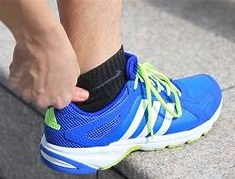
There is an important distinction here: Footwear can cause Achilles Tendonitis, but footwear can't fix it. If you suspect footwear may be part of the cause, you need to ditch the shoes or boots or sandals that aggravate the injury. Typically, they would be any footwear that puts pressure, above your heel, on your Achilles tendon. Lots of shoes have this problem and so do some shoes without a heel but with a strap around the back of the Achilles. There's no such thing as footwear that heals Achilles injuries (even though many companies will try to sell you some), but getting rid of the wrong footwear is necessary to stop the aggravation to your Achilles.
If footwear was the cause, it should be pretty obvious. You will be able to feel the back of your shoe pressing on your Achilles as you move. If that's not the cause, then changing your shoes is not boing to fix your Achilles. In most cases Achilles tendonitis is caused by a one time incident or a prolonged excessive strain as discussed above. Changing your footwear in those situations is more likely to aggravate your condition than help it. If your body was good with your shoes before the injury, it will be happy for what it is used to during the recovery process.
Tons of companies online market shoes to fix your Achilles but it's all just marketing for them to make money. They won't help your injury. Shoes with extra arch support or that change the position of your foot when you walk are more likely to introduce new strains to your foot and ankle that your body is not used to. And that additional strain can slow your recovery or lead to other types of foot injuries. It is very common that someone will change their shoes when they have Achilles issues, to ones with arch supports, and end up developing plantar fasciitis as a result. If your shoes are the cause they will be because they are new shoes and going back to your old ones is your best plan until your Achilles gets better.
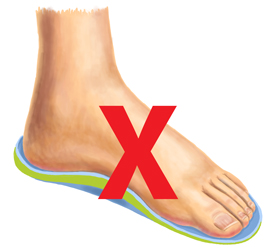
If you are getting new shoes now or after you recover, never get fooled into ads for shoes with 'Arch supports'. Your arch (plantar) is not intended to have support or upward pressure - none at all. Arch supports are one of the leading causes of Plantar Fasciitis and you don't want to trade one foot problem for another. Get a shoe where all the support comes from the heel and ball of your foot but not the arch. Get a shoe that does not put any pressure on the back of your foot, over the Achilles. Any pressure at the back of your foot should only be low against the heel bone and it should not be a lot, just enough to keep the shoe in place.
This one surprises a lot of people. Antibiotics are prescribed for good reason and if your doctor prescribes them, you should definitely use them. The downside is that antibiotics can often cause tendonitis to occur, so if you have been taking antibiotics and maintained a modest activity level while you were on them, this may have caused your tendonitis. Once the tendonitis sets in, it doesn't go away without proper treatment. Once your Achilles condition is under control though, it is unlikely to return if antibiotics were the contributing factor.
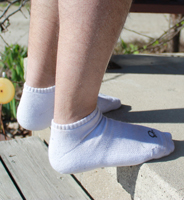
Stretching and Exercise is great for muscles and it can be for tendons when done properly at the correct time. If you have a Tendon injury and you are trying to stretch and exercise it back to health you are only making the situation worse. At any time, if you feel tendon pain during any exercise or stretch, Stop immediately. If the stretch or exercise causes no tendon pain at all, you may be okay with that activity. Generally, when you have a tendon injury that is still painful, exercise and stretching really only put you at more risk of reinjury. You are better off resting until the pain subsides, and then work on strength and range of motion.
For the most part, your tendons are not supposed to stretch. They are the wires and cables that connect your muscles to your bones and they are not designed to stretch. Your tendons will get stronger, though, with exercise and light stretching, but the level of stretch required is very low. Before you take up these activities, if your tendon is injured, it needs rest, blood flow, and time to recover. If you let it partially recover then stress it again, you are likely to tear back open the old wounds setting your recovery backward. For the long story on healing see our "How Your Body Heals Page".
Save the physio for after the pain is gone.
Physio is to help rebuild strength in your muscles and tendons once the injury is recovered.
If you are doing any physio, stretches, or exercise, and you feel pain in your Achilles STOP!.
Never drive through Achilles pain because you will just make your condition worse.
If you have an Achilles injury, don't try to stretch it early in the healing process.
Avoid stretching it and let it heal.
Physio definitely has it's place as your body heals.
Just remember that physio doesn't help your body heal, your body heals on its own.
Physio's role is to help you regain the strength in your ankle so you can return to regular life more quickly.
Heal your Achilles first, and use Physio to help strengthen the tissue once it has healed.
Sadly, the Internet is full of misinformation today. There are probably more bad treatments suggested for Achilles Tendon injuries than most other ailments we see. In many cases you are being told to try treatments that can actually make your condition worse! Among these are insoles, elastic sleeves, pain creams, and several types of injections. For a rundown of dangerous and ineffective solutions to beware of, check out our Achilles Treatment Myths Page.
Your Achilles is pretty tough and it's not that easy to hurt it in the first place. Regardless of which reason above caused the initial injury, once it is injured, the path back can sometimes be difficult. For most people, it's not feasible to just stop using your ankle. So for most people, as fast as your body is attempting to heal the injury, your daily activity is causing reinjury. You rest and take a couple steps forward in the healing process, and then you do some activity that sends you a couple steps backward, undoing the healing that you just did. It is a vicious cycle that needs to be corrected if the injury has been plaguing you for some time.
Achilles tendonitis is often what develops when you had an initial injury that healed a bit and got reinjured, and that cycle has repeated for a long time. That pain you feel when you do activities, or perhaps it shows up afterwards, is a clear indication that you are moving the healing process backward. Pain in your Achilles means you are reinjuring your Achilles. There's no such thing as driving through the pain or pain being any kind of good sign when you are dealing with the Achilles. What is causing the pain is causing your Achilles Tendonitis to continue
Some people will be surprised to realize that things they have been doing that they thought would help are actually making the condition worse. Are you stretching it to help it heal and it hurts a bit during the stretch? Are you doing exercises to strengthen in and they hurt? Does your physio hurt? If any of these things cause pain in your Achilles, that pain means they are doing more damage than good. Exercise, stretching and physio can be good, but only if they don't involve pain. Driving through the pain is always bad.
Yes, it's impossible to stop all activity since you need to move to get through your day. Sometimes you're going to do something that hurts. That can't be avoided. But you definitely want to minimize the things that cause you pain. You want to make the backward steps of the healing process as few and as small as possible. That's usually enough to let you heal. If you don't want to wait, then there are also things you can do to make the steps forward in the healing process as big as possible.
There are products that you need to heal quickly, and relieve pain quickly. To stimulate blood flow for faster healing, you need the BFST® Achilles Wrap. For immediate pain relief and to reduce swelling, you need a ColdCure® Achilles Wrap.
Surgery for your Achilles Injury is rarely necessary. If you have a complete tear of the Achilles Tendon, you may need surgery to repair it. In all other circumstances, if you are just suffering from tendonitis or a partial tear, your body will heal naturally with the right tools. The King Brand BFST® and ColdCure® Achilles Wraps will help you recover quickly. If you do have to have surgery, they will accelerate the healing process post-surgery.
Do this and your Achilles Injury can truly heal - finally.
For full assurance these products work, see our Reviewed Technology page.
You don't have to wait. You can heal much more quickly with the right treatment. For an Achilles Injury, blood flow is the most critical element in rapid recovery. Blood Flow Stimulation Therapy® (BFST®) gives your injured Achilles the blood flow it needs to heal quickly and completely.
Blood flow brings oxygen and nutrient-rich blood to the injured area - a requirement for the body to heal itself. Unfortunately, an injured Achilles at rest often has restricted blood flow, which in turn limits the body's ability to heal. Physical activity will promote blood flow but all too often it also results in small but frequent re-injury, which extends your healing time and greatly increases the amount of scar tissue that develops. With a King Brand® BFST® Achilles Wrap, blood flow can be stimulated in the injured area while you are at rest. With improved blood flow and without physical activity and the risk of re-injury, you can recover from your Achilles Injury at a surprisingly rapid rate.
To minimize pain and swelling, complete a ColdCure® treatment any time your pain level increases, or if you have been active. The ColdCure® Achilles Wrap provides superior relief of the swelling and pain that comes with Achilles Tendonitis. ColdCure® Achilles Wraps use cold and compression together, because cold and compression are the two things you need to eliminate pain and swelling as quickly and effectively as possible. The application of cold compression must be uniform and complete if it's going to work the best. This is why the ColdCure® Achilles Wrap has been custom designed to perfectly fit the back of the Ankle, to ensure that your injury receives an even distribution of cooling power.
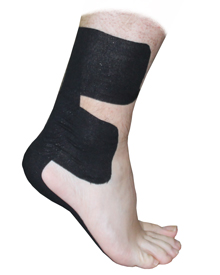
When you're not doing treatments with your BFST® or ColdCure® Wrap, your injured tissue becomes vulnerable to further damage. You don't want to re-injure your already fragile tissue and make your Achilles Tendonitis worse. Apply KB Support Tape™ between your BFST® and ColdCure® treatments to provide your Achilles Tendon with additional support and protection.
Your ankle moves a lot through the day, and when you're injured with an Achilles Tendon Injury, you feel every little movement. You can't stop and wait for your Achilles Tendonitis to go away, so let's provide some support for your ankle, without taking away your range of motion. KB Support Tape™ is designed to protect your tendons, ligaments and muscles and help prevent further damage as you go through your day. It does this all without restricting your range of motion.
Our skin is soft and elastic and can stretch much more than the tissue underneath. When you apply KB Support Tape™ to your skin, it becomes a much more rigid surface than before; serving to limit how much the skin can stretch. KB Support Tape™ makes your skin a source of outside support to hold your tissue in place, helping you avoid re-injury. That's why we call it armor for your injury.
The information on your website has been very helpful and your products are excellent! Thank you.
Doreen from New JerseyColdCure Ankle | BFST Ankle | Pre-Cut TapeFeb 12, 2023

Achilles Injuries can be so painful and debilitating that it causes us to rely heavily on pain killers. But honestly, pain killers are not your friend. It is understandable that you are looking for the relief from pain. Remember, though, the pain is there to stop us from hurting the area further. The pain is your body saying, "please stop doing that!" While pain killers are a welcome relief, they can be dangerous to take when you're active. Pain killers can completely block the pain signal, making you unaware of any further damage you could be doing to your Achilles Tendon. Pain killers should be restricted to times of rest.
When it comes to pain killers, some products are much more effective than others. Some can actually help your injury when used correctly and others will only make it worse. According to the National Institute of Health, our own government body tells us that Acetaminophen overdose is the leading cause for calls to Poison Control Centers (>100,000/year) and accounts for more than 56,000 emergency room visits. And acetaminophen (Tylenol) won't help you get better one bit. It only puts you at risk of more injury. If you want help choosing the right pain killer and want advice on how to use it more safely and correctly, give us a call at 1-844-672-9440. We will give you excellent guidance. No charge. No purchase necessary.
To maximize healing and minimize pain and swelling, complete a BFST® treatment right before bed. We can give you advice on medication you can take to reduce the pain and help you heal while you sleep. The BFST® treatment will work towards healing while you sleep, and the medication will work to relieve the pain and inflammation so that you can experience restful sleep. During the day, ColdCure® treatments are the best choice to continue to reduce inflammation while you are active. Our medical grade injury tape, KB Support Tape™, is excellent for reducing re-injury and pain when you need to be active as well. If you're in pain, give us a call now for free advice 1-844-672-9440.
What I am learning in this, there are times in life when you have to be very proactive, because the medical establishment will let you slip through the cracks. You guys are extraordinary with this follow up, thank you. I never recommend anything - but I'm recommending you.
Sheila from California BFST Ankle | Pre-Cut TapeMay 05, 2023